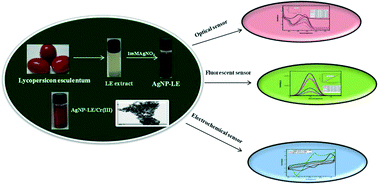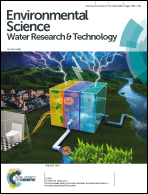Green synthesized unmodified silver nanoparticles as a multi-sensor for Cr(iii) ions
Abstract
In this work we present optical, fluorescence and electrochemical sensing of Cr(III) ions using silver nanoparticles (AgNPs) synthesized by a green method using Lycopersicon esculentum (LE) extract without any surface functionalization. The synthesized AgNP-LE was analyzed by various techniques such as UV-visible absorption spectroscopy, infrared spectroscopy, X-ray diffraction and transmission electron microscopy. The principle behind the sensing involves the dispersion of nanoparticles followed by the aggregation of Cr(III) ions leading to a redshift of the surface plasmon resonance (SPR) peak in the UV-vis absorption spectra. The fluorescence sensing of Cr(III) ions using AgNP-LE was also studied by the changes in the fluorescence intensity. The electrochemical studies were carried out using a AgNP-LE modified platinum electrode. The linear calibration range was focused over the range of 10 to 90 μM and the limit of detection was found to be 0.804 μM using differential pulse voltammetry. This simple and sensitive method has a high selectivity towards Cr(III) ions over other metal ions. The modified sensor was also studied over real samples to determine the presence of Cr(III) ions. The synthesized AgNP-LE also exhibited antibacterial properties against waterborne pathogens like Escherichia coli and Staphylococcus aureus extracted from the water sample collected from the Ashtamudi lake, Kollam, Kerala.



 Please wait while we load your content...
Please wait while we load your content...